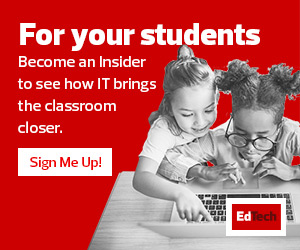A Different Lens for K–12 Education
Michael Kuhrt, superintendent of the Wichita Falls Independent School District in Texas, believes “traditional schools don’t serve the needs of a 21st century learner.” That is why his district is building high schools that offer students “a flexible schedule, flexible spaces and flexible learning modes.”
Though they had been looking at a virtual option for years, educators at Fort Smith Public Schools in Arkansas didn’t take the leap until the pandemic. “The pandemic has forced us to look at things through a different lens,” says Deputy Superintendent Martin Mahan.
And while digital equity issues persist, recent federal and state funding has helped bring millions of previously disconnected students online. In “Digital Breakthroughs,” Mississippi educators share how federal and state aid allowed them to not only support connectivity for families who live in remote areas, but also make significant infrastructure upgrades. Scott Muri, superintendent of the Ector County Independent School District in Texas, searched for and found a long-term broadband solution for the entire community.
After more than a year of remote and hybrid learning, many educators are rightly questioning what is and isn’t impossible. What we are all learning is that sometimes our most innovative and creative ideas come from necessity. And as we look toward fully reopening physical schools that have undergone seismic shifts, we can and must take some of these new ideas with us.
WATCH NOW: Educators discuss the future of learning for K–12 students.











